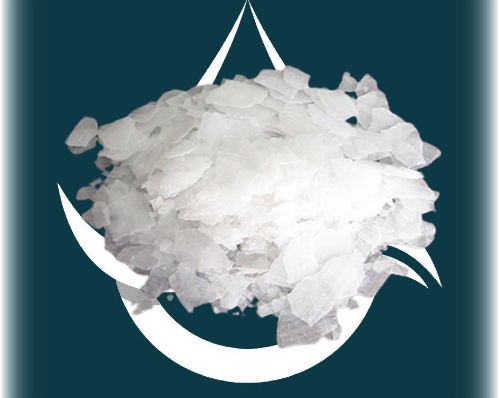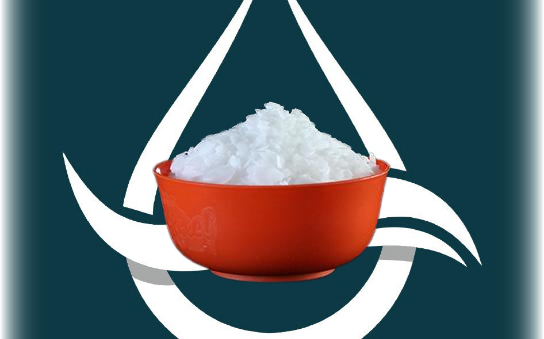Introduction to Caustic Soda
Caustic soda, also known as sodium hydroxide (NaOH), is a highly versatile compound that finds numerous applications across various industries. It is a strong alkaline chemical that is widely used in chemical manufacturing, water treatment, textile and paper production, food processing, metallurgy, and soap manufacturing, among others. Caustic soda plays a crucial role in these industries due to its ability to react with acids, regulate pH levels, and perform various chemical and cleaning processes. This article delves into the diverse applications of caustic soda in different sectors, highlighting its significance and impact within each industry.
Introduction to Caustic Soda
Caustic soda, also known as sodium hydroxide, is a versatile chemical compound that finds applications in various industries. It is a highly corrosive substance that is commonly used for its alkaline properties. sodium hydroxide is a key ingredient in many manufacturing processes and plays a crucial role in maintaining the balance and efficiency of different industrial operations.
Caustic Soda in the Chemical Industry
Industrial Chemical Production
In the chemical industry, sodium hydroxide is widely employed in the production of various chemicals. It is used as a raw material for the manufacturing of solvents, detergents, soaps, and other cleaning agents. Additionally, caustic soda is essential in the production of cellulose-based products like rayon and cellophane.
pH Regulation and Neutralization
Caustic soda is an excellent pH regulator and is often used for neutralization purposes. It can adjust the acidity or alkalinity of solutions, making it an indispensable tool in chemical processes. By carefully controlling pH levels, manufacturers can ensure optimal conditions for reactions and enhance the quality of their products.
Polymer Manufacturing
The production of polymers, such as plastics and resins, heavily relies on caustic soda. It is used as a catalyst or reactant in polymerization reactions, facilitating the formation of long chains of repeating molecular units. The versatility of sodium hydroxide makes it an invaluable component in the creation of countless plastic-based products that we use in our daily lives.
Applications of Caustic Soda in the Textile and Paper Industries
Textile Fiber Processing
In the textile industry, caustic soda plays a vital role in the processing of fibers. It is used in the mercerization process to improve the strength, luster, and dyeability of cotton fibers. sodium hydroxide treatment of fabrics also helps in achieving desired textures and properties, making it an essential step in textile production.
Paper Pulp Production
Caustic soda is extensively utilized in the paper industry for the production of pulp. By cooking wood chips or other raw materials with a caustic soda solution, the lignin present in the material breaks down and separates from the cellulose fibers. This process, known as kraft pulping, is essential in producing high-quality paper and paper products.
Dyeing and Bleaching Processes
The textile and paper industries rely on caustic soda for essential dyeing and bleaching processes. Caustic soda helps remove impurities, oils, and unwanted colors from fabrics and paper, preparing them for dyeing or achieving a desired level of whiteness. Its strong alkaline properties make it an effective agent in these crucial stages of coloration and purification.
Caustic Soda in the Water Treatment and Sanitation Sector
Municipal Water Treatment
Caustic soda is widely utilized in municipal water treatment facilities to adjust the pH levels of water. By neutralizing acidity, it helps protect water infrastructure from corrosion and ensures the delivery of safe and clean drinking water to communities. Caustic soda also aids in the removal of heavy metals and other contaminants during the water treatment process.
Wastewater Treatment
In wastewater treatment plants, caustic soda is essential for pH control and neutralization of acidic effluents. It plays a crucial role in the precipitation of metals and the removal of pollutants from wastewater. By utilizing caustic soda, these treatment facilities can effectively clean and purify wastewater before returning it to the environment.
Pool and Spa Maintenance
Caustic soda is commonly used in pool and spa maintenance to regulate pH levels and ensure proper sanitization. It helps balance the water chemistry, preventing the growth of harmful bacteria and maintaining optimal conditions for safe swimming and relaxation. So, next time you’re lounging by the pool, remember to thank caustic soda for keeping the water clean and crystal clear.
In conclusion, caustic soda finds applications in a wide range of industries, from chemical manufacturing and textile production to water treatment and sanitation. Its versatility and ability to adjust pH levels make it an indispensable tool for many manufacturing processes. So the next time you encounter caustic soda, remember its significant role in various industries and appreciate its contributions to our everyday lives.
Caustic Soda in the Food Processing Industry
Food and Beverage Production
Caustic soda might not sound like a glamorous ingredient in the food and beverage industry, but it plays a crucial role in various production processes. It is commonly used in the preparation of certain foods, such as olives and cocoa, where it helps regulate pH levels and remove natural bitterness. So, the next time you enjoy some delicious chocolate or tangy olive, remember that sodium hydroxide might have played a part in making it just right.
Cleaning and Sanitization
Cleanliness is paramount in the food industry, and caustic soda is a secret weapon in the battle against stubborn stains and bacteria. It is widely used for cleaning and sanitizing equipment, surfaces, and pipelines, ensuring that production environments meet stringent hygiene standards. So, when you see sparkling stainless-steel surfaces and spotless industrial kitchens, you can thank sodium hydroxide for keeping things squeaky clean.
Dairy Processing
Milk and dairy products go through a complex production process, and caustic soda plays an essential role in many steps along the way. From cleaning and sanitizing milk storage tanks to adjusting pH levels in cheese production, caustic soda helps ensure the quality and safety of dairy products. So, the next time you savor a creamy slice of cheese or indulge in a refreshing glass of milk, remember that caustic soda contributed to its production.
Caustic Soda’s Role in the Aluminum and Metallurgical Sector
Aluminum Extraction and Refining
Ever wondered how aluminum is made? Well, sodium hydroxide is a key player in the extraction and refining process. It helps dissolve alumina, the main component of bauxite ore, allowing the extraction of pure aluminum. This versatile compound enables the production of everything from soda cans to aircraft parts, making it an invaluable resource for the aluminum industry.
Metal Cleaning and Surface Treatment
In the world of metals, cleanliness is vital. NaOH is utilized for cleaning metal surfaces, removing stubborn contaminants, and preparing them for further processing. It is also used in surface treatment processes, such as anodizing, where it helps create a protective layer on metal surfaces, enhancing their durability and appearance. So, whether it’s a shiny car bumper or a sleek stainless-steel appliance, chances are caustic soda played a role in making it look impeccable.
Steel Production
Steel is the backbone of many industries, and caustic soda contributes to its production in various ways. It helps in the descaling process, removing impurities and rust from steel surfaces. Additionally, NaOH is used in the treatment of steel-making by-products, such as slags and waste gases, ensuring they meet environmental standards. So, the next time you marvel at a towering skyscraper or rely on a sturdy steel structure, remember that NaOH played a part in its creation.
Caustic Soda in Soap and Detergent Manufacturing
Soap Production
Soap has been a staple in personal hygiene for centuries, and caustic soda is a vital ingredient in its production. Through a process called saponification, NaOH reacts with fats or oils, transforming them into soap. So, the next time you enjoy a luxurious bubble bath or feel the silky lather of your favorite soap, remember that caustic soda (NaOH) helped make it possible.
Detergent Formulation
NaOH doesn’t stop at soap; it also plays a role in the formulation of detergents. Whether it’s dishwashing liquid, laundry detergent, or household cleaning products, NaOH is often used to adjust pH levels and enhance cleaning efficiency. It helps remove grease, stains, and grime, making your cleaning endeavors a little easier. So, the next time you tackle a pile of dirty dishes or conquer a mountain of laundry, thank NaOH for lending a helping hand.
Laundry and Household Cleaning Products
Caustic soda’s influence extends beyond soap and detergent production. It is an essential ingredient in many laundry and household cleaning products. From stain removers to oven cleaners, NaOH helps tackle the toughest cleaning challenges. So, the next time you witness the power of a stain remover lifting a stubborn mark or marvel at the effectiveness of an all-purpose cleaner, remember thatNaOH has your back.
Environmental Impacts and Safety Considerations of Caustic Soda (NaOH) Applications
Environmental Effects
While NaOH is a versatile compound with numerous applications, it’s important to be aware of its environmental impact. Improper disposal or release of NaOH can harm aquatic ecosystems and affect water quality. Therefore, it is crucial for industries to handle and dispose of NaOH safely, following environmental regulations and guidelines.
Occupational Safety Measures
Caustic soda is a powerful chemical and requires proper precautions when handling. It can cause skin and eye irritation if proper protective measures are not taken. Industries that use caustic soda must prioritize employee safety by providing adequate personal protective equipment and implementing strict safety protocols. By prioritizing safety, industries can ensure the well-being of their workers and minimize the risk of accidents. In conclusion, the applications of caustic soda in different industries are vast and essential. From its role in chemical production to its use in water treatment, food processing, and beyond, caustic soda proves to be a versatile and valuable compound. However, it is crucial to recognize and address the potential environmental impacts and prioritize safety measures when handling this chemical. By understanding the diverse applications of caustic soda and ensuring responsible usage, industries can continue to benefit from its wide-ranging capabilities while minimizing any negative consequences.
FAQ
?Is caustic soda the same as sodium hydroxide
No, caustic soda and sodium hydroxide are the same compound. NaOH is the common name for sodium hydroxide (NaOH), which is a strong alkaline chemical used in various industries.
Is caustic soda (NaOH) harmful to the environment?
NaOH can have environmental impacts if not handled and disposed of properly. Its high pH and alkalinity can be harmful to aquatic life and ecosystems. It is important to follow proper procedures for its usage, storage, and disposal to minimize environmental harm.
What safety precautions should be taken when working with caustic soda?
When working with caustic soda, it is crucial to wear appropriate personal protective equipment (PPE), such as gloves, goggles, and a lab coat, to protect the skin and eyes from contact. Adequate ventilation should be ensured, and it is important to handle the chemical in a well-ventilated area. Additionally, proper training and knowledge of handling procedures are essential to prevent accidents and ensure personal safety.
?Are there any alternatives to caustic soda for the industries mentioned
While caustic soda is widely used in various industries, some applications may have alternative chemicals or processes. For example, in water treatment, lime (calcium hydroxide) may be used as an alternative to NaOH for pH adjustment. However, the suitability of alternatives depends on specific requirements and industry practices, and it is advisable to consult industry experts and professionals for appropriate guidance.









